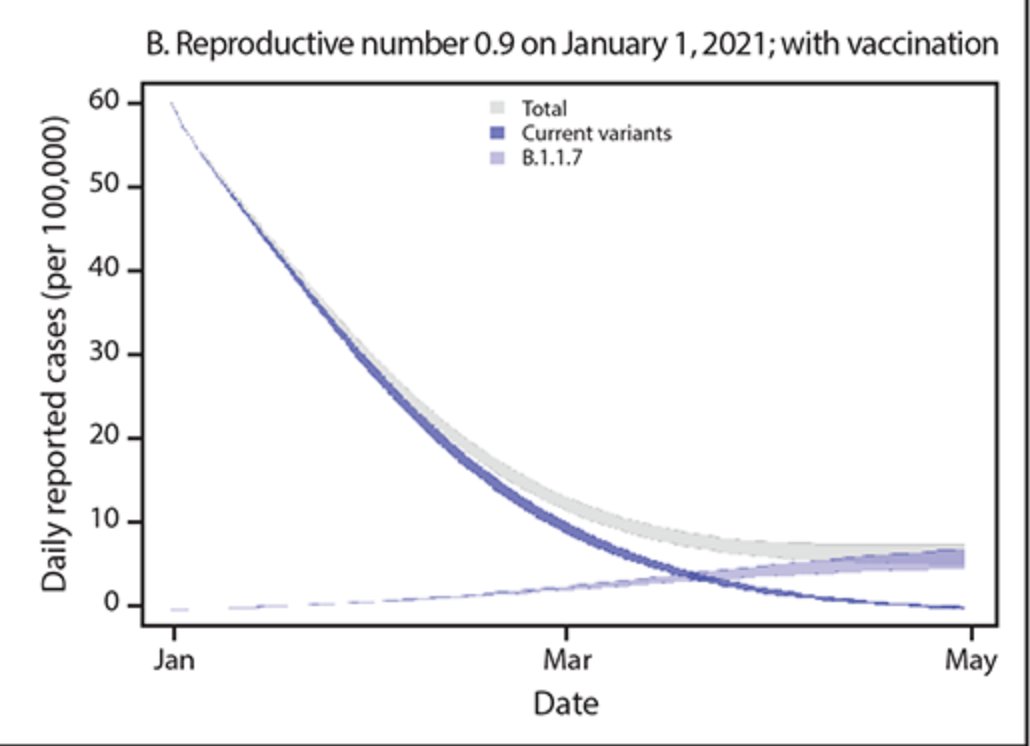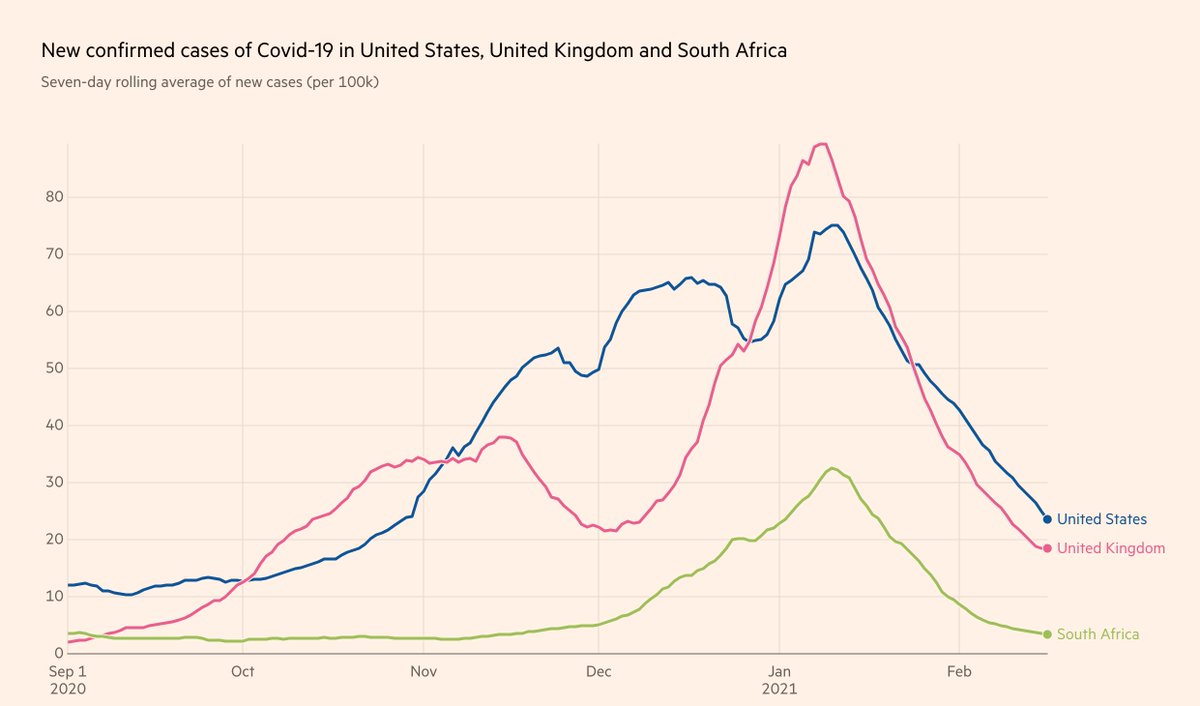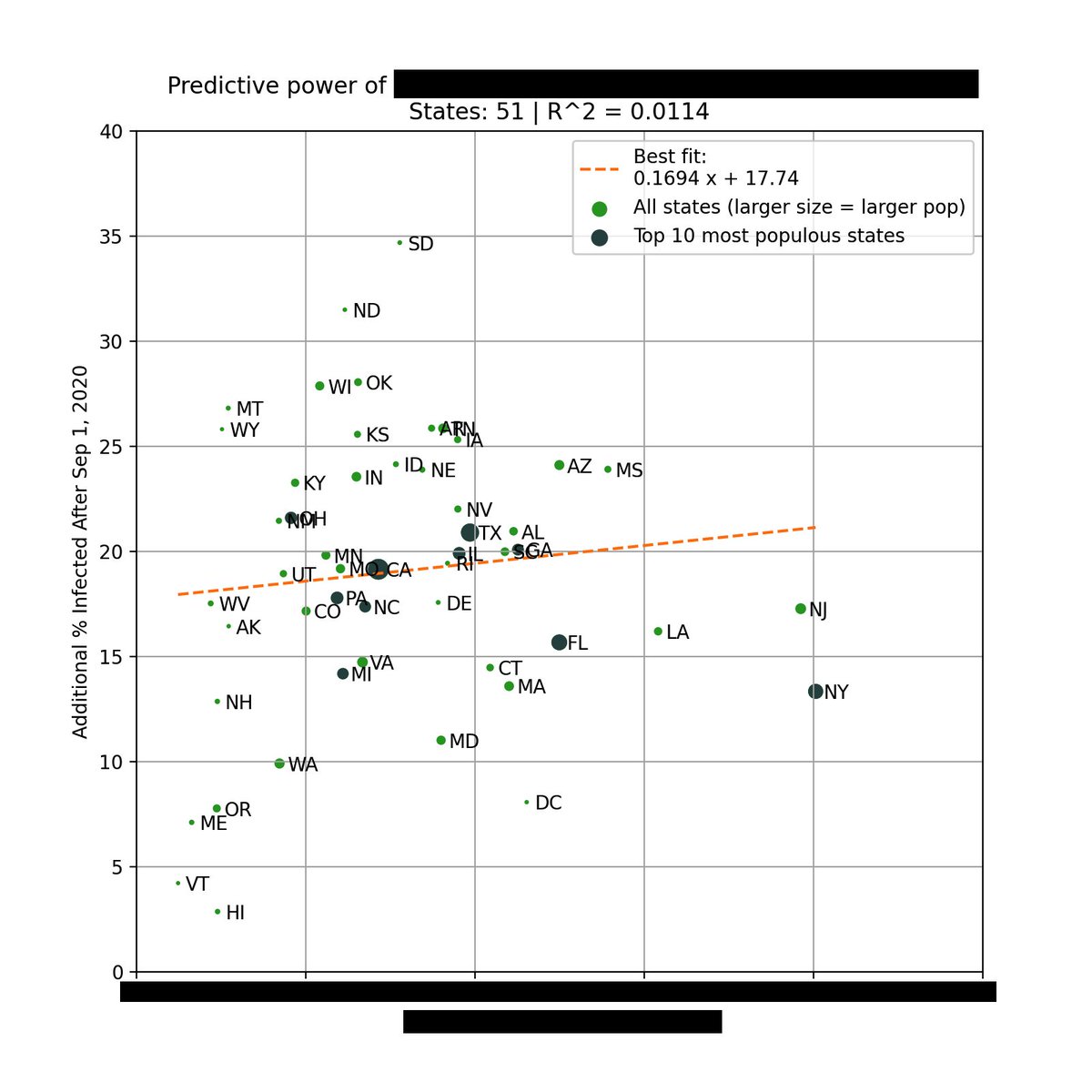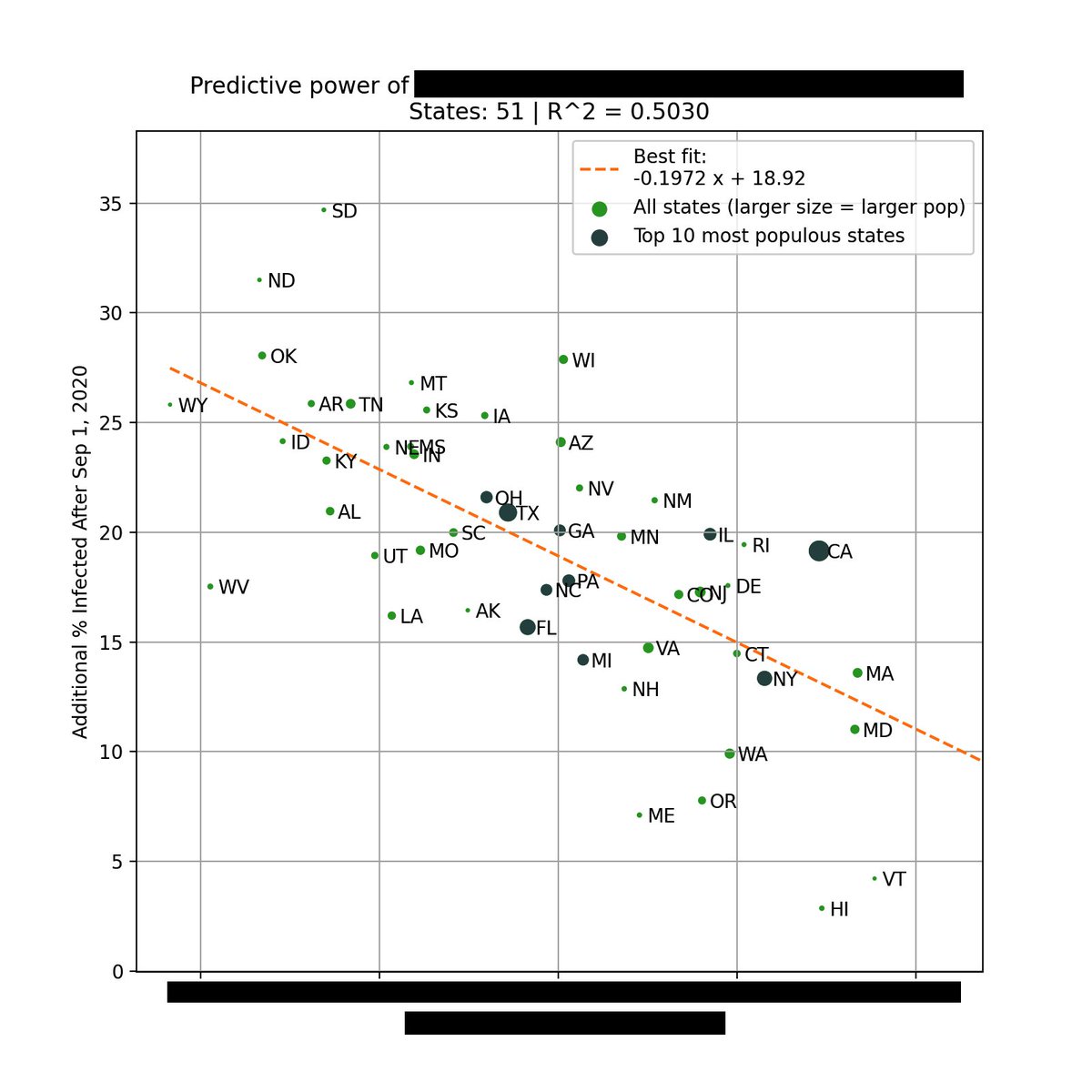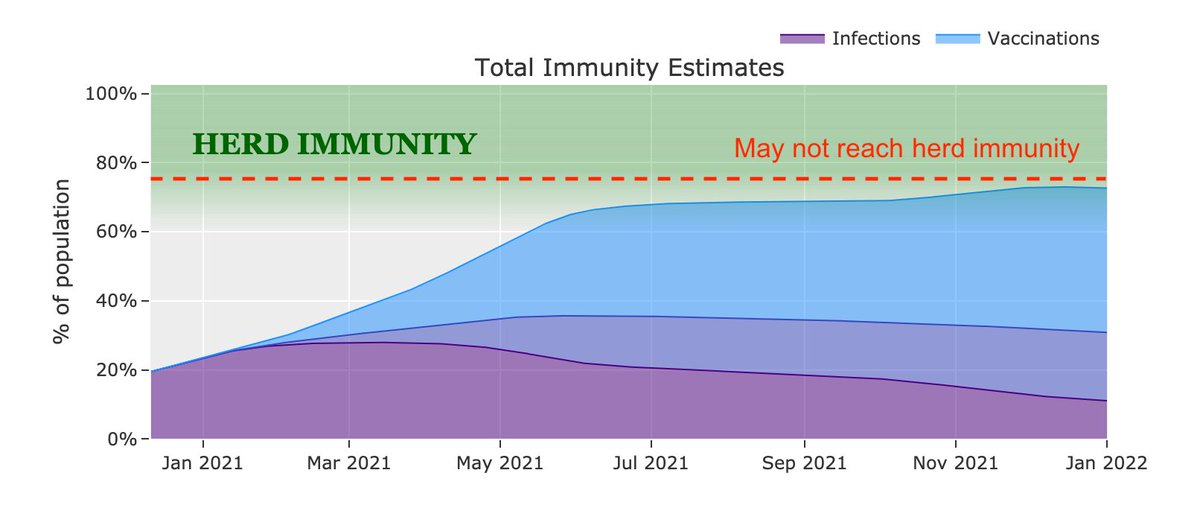
When can we return to normal? Forget about "herd immunity".
Below is my estimate for the number of susceptible individuals over time, as a proportion of the US population.
Looking at this graph, what is the best point to go back to normal? Christmas? Fall? Or Summer?
🧵
Below is my estimate for the number of susceptible individuals over time, as a proportion of the US population.
Looking at this graph, what is the best point to go back to normal? Christmas? Fall? Or Summer?
🧵

By summer, everybody who wants a vaccine will be able to get one. The vulnerable population will long have been able to receive their shots. Hospitalizations & deaths will be at negligible levels.
Normality will happen... with or without herd immunity.
Normality will happen... with or without herd immunity.
https://twitter.com/youyanggu/status/1359941475916795908
Our country currently has no concrete guidelines for when to expect a return to normal. We seem to be more concerned about a theoretical threshold than setting realistic goals about when restrictions can be dropped.
Meanwhile, UK just announced theirs:
Meanwhile, UK just announced theirs:
https://twitter.com/BorisJohnson/status/1363971476739805187
Yesterday, one state outlined a clear goal for when the mask mandate will be lifted: 8 weeks after 1.6M first doses have been allocated, enough for 70% of the eligible population.
I hope other states can also be transparent about their exit strategies.
sltrib.com/news/health/20…
I hope other states can also be transparent about their exit strategies.
sltrib.com/news/health/20…
If we want people to continue to take precautions as restrictions are eased, we should set a common goal to work towards.
A messaging such as "you must continue to social distance and wear a mask indefinitely, even if you get vaccinated" will only fuel vaccine hesitancy.
A messaging such as "you must continue to social distance and wear a mask indefinitely, even if you get vaccinated" will only fuel vaccine hesitancy.
We have a former president who said Covid is already over & a current president who says it won't be normal until Christmas.
Because our country is so polarized, this leads to people gravitating towards either extreme. Narratives then become driven by politics, not science.
Because our country is so polarized, this leads to people gravitating towards either extreme. Narratives then become driven by politics, not science.
If you follow my work, you know that the truth is usually somewhere in the middle.
And right now, we are still doing a poor job of finding common ground.
Thank you to all the experts & scientists who are cutting through politics and advocating for realistic, data-driven goals.
And right now, we are still doing a poor job of finding common ground.
Thank you to all the experts & scientists who are cutting through politics and advocating for realistic, data-driven goals.
Being kind isn't just about telling people to stay home.
Being kind is about sending kids to school so they can get a proper education.
Being kind is also about telling people that it's safe for their children to hug & kiss their grandparents if they've been fully vaccinated.
Being kind is about sending kids to school so they can get a proper education.
Being kind is also about telling people that it's safe for their children to hug & kiss their grandparents if they've been fully vaccinated.
To conclude, it's important that we return to normal in a safe and responsible manner.
Currently, the data suggests that we'll be able to do that by this summer.
Currently, the data suggests that we'll be able to do that by this summer.
Update: A common question I received was why I didn't include vulnerable individuals under age 45.
First, including them doesn't change the shape of the curve
Also, just 2% of COVID-19 deaths came from those under 45. And only 4% of all deaths under 45 involve COVID-19.
First, including them doesn't change the shape of the curve
Also, just 2% of COVID-19 deaths came from those under 45. And only 4% of all deaths under 45 involve COVID-19.

It's interesting to see so many "but long Covid!" replies, yet not a single one of them gave any guidelines or metrics about when things should go back to normal in their alternate approach.
I'm guessing those are the same individuals who have the liberty to work from home.
I'm guessing those are the same individuals who have the liberty to work from home.
• • •
Missing some Tweet in this thread? You can try to
force a refresh




